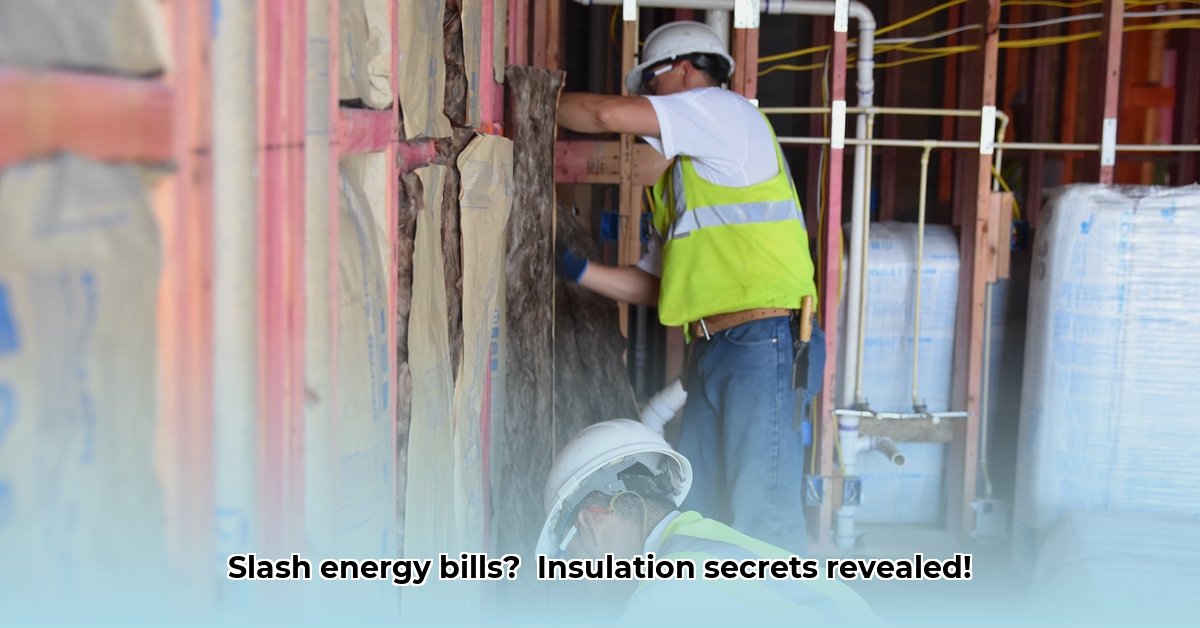
Billings Insulation: A Comprehensive Guide for Homeowners
Freezing Billings winters and scorching summers can significantly impact your energy bills. This guide explores insulation options in Billings, Montana, helping you make informed choices for a more comfortable and energy-efficient home. We'll compare insulation types, discuss local installers, and provide cost estimates to empower you to make the best decision for your needs. Are you ready to reduce your energy consumption and save money?
Understanding Your Insulation Needs in Billings, MT
Before choosing insulation, define your goals. Do you prioritize lower energy bills, increased comfort, or both? Older Billings homes often require more extensive insulation upgrades than newer constructions. Your budget also plays a crucial role; different insulation types have varying costs. Let's explore those now.
Insulation Options for Billings Homes
Several insulation options exist, each with advantages and disadvantages:
| Insulation Type | Pros | Cons | Estimated Cost per Square Foot | R-Value (per inch) |
|---|---|---|---|---|
| Fiberglass Batt/Roll | Affordable, relatively easy DIY installation (though professionals offer superior results) | May settle over time, less effective at sealing air leaks | $0.50 - $2.00 | 2.9 - 4.0 |
| Spray Foam Insulation | Excellent air seal, high R-value, long-lasting | More expensive, requires professional installation | $1.50 - $4.00 | 6.0+ (open-cell), 7.0+ (closed-cell) |
| Cellulose Insulation | Good insulation value (R-value), eco-friendly, good sound dampening | Slightly messy installation, professional installation often recommended | $0.75 - $2.50 | 3.0 - 4.0 |
| Mineral Wool (Rockwool) | Fire-resistant, excellent sound insulation | Typically more expensive than fiberglass | $1.00 - $3.00 | 3.0 - 4.0 |
The R-value indicates thermal resistance – higher is better for energy efficiency. Cost estimates are approximate and depend on factors like material quantity, project complexity, and installer rates. Don't forget potential local and federal rebates, which may reduce the overall project cost, making insulation even more attractive. Contact your local utility company to explore these opportunities.
Finding a Reputable Billings Insulation Installer
Choosing a qualified installer is crucial. Look for certifications such as those from the Building Performance Institute (BPI) which signals adherence to industry best practices. Peruse online reviews on sites like Yelp or Google Reviews to learn about their reputation and customer experiences. Always obtain at least three quotes for comparison. Ask about their experience with your chosen insulation type and project specifics, as well as their warranty coverage.
The Insulation Installation Process: A Step-by-Step Guide
A typical Billings insulation project follows these steps:
- Home Assessment: The installer evaluates your home to identify areas needing insulation.
- Detailed Plan: A comprehensive plan outlines materials, processes and costs.
- Professional Installation: The insulation is carefully installed for optimal energy efficiency.
- Final Inspection: A thorough inspection assures correct installation and customer satisfaction.
Professional installation guarantees maximum insulation effectiveness and avoids potential future problems.
Long-Term Benefits of Billings Home Insulation
Investing in home insulation offers long-term advantages:
- Lower Energy Bills: Noticeably reduced heating and cooling costs.
- Increased Comfort: A more consistently comfortable indoor temperature year-round.
- Higher Property Value: Improved energy efficiency enhances your home's value.
Is it worth the investment? Absolutely. A warmer, more comfortable home, and a lighter wallet? That's a win-win.
Choosing Spray Foam Insulation in Billings, MT: A Deeper Dive
Spray foam insulation provides superior energy efficiency but requires careful consideration of open-cell versus closed-cell options. Open-cell is more affordable but offers lower R-values, while closed-cell provides a superior air seal and higher R-values, justifying the increased cost over the long term. The choice depends on your budget and energy savings goals. Remember to choose a certified installer and obtain multiple quotes, focusing not only on price, but also the overall value provided by the installer.
Key Considerations for Choosing a Spray Foam Installer:
- Certifications: Look for SPFA (Spray Polyurethane Foam Alliance) certification.
- Online Reviews: Research installer reputations and customer experiences.
- Multiple Quotes: Compare pricing, materials and timelines.
- Detailed Questions: Discuss experience, materials, and warranty policies.
Investing in proper insulation is a significant upgrade. While the initial costs might be higher, the long-term energy cost reductions far outweigh the expense. Consider governmental incentives or rebates when calculating your return on investment. By carefully evaluating your options and working with a qualified installer, you can significantly improve your home's energy efficiency and comfort. Don't delay – start saving!